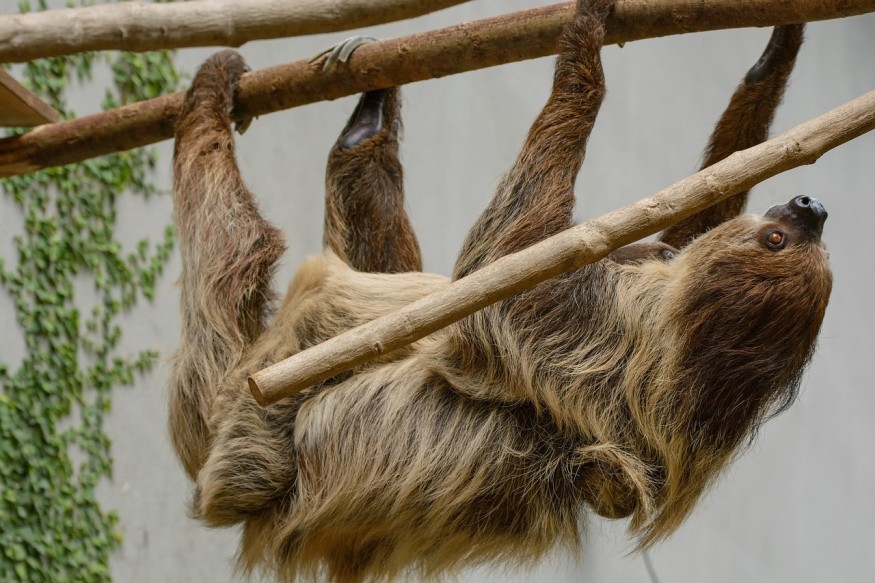With their traditional reputation as lethargic tree inhabitants, it's natural to presume sloths fare poorly against ground predators. Yet, a camera trap in the Amazon offered rare footage, revealing a sloth's unexpected defense and evasion of an ocelot during its daytime meal.

Predator Vs. Prey: Predation Attempt of Ocelot to a Sloth Caught in the Act
The footage was recorded at the Tiputini Biodiversity Station in the Ecuadorian Amazon. The captivating video featured a Linnaeus's two-toed sloth (Choloepus didactylus) at a mineral lick, or saladero, when it became the target of an attack by an ocelot. This location, known for its ecological significance, witnessed an unusual confrontation between these two species.
The perilous nature of such encounters is evident from the video clips, as the sloth adeptly wards off the ocelot's assault with quick, strategic jabs, creating a gap that allows it to promptly retreat across a log spanning the mineral lick.
This event is a rarity, as predation incidents are seldom captured on camera, and sloths typically avoid these licks during safer nighttime hours. The unexpected targeting of sloths by ocelots adds to the intrigue, as the methods behind the ocelot's approach remain unclear.
Notably, both the Linnaeus's two-toed sloth and ocelots present challenges for researchers due to their elusive and enigmatic behavior in the wild. Anthropologist Anthony Di Fiore of the University of Texas at Austin explains in the news release the difficulty in studying these creatures.
While the camera trap's limited field of view prevents confirmation of the sloth's ultimate outcome, subsequent investigation at the site failed to reveal any traces of the sloth, leaving its fate uncertain.
READ ALSO : Ancient Sloth Bones Reveal Early Human Presence in South America: A Key Discovery in Rewriting History
Snapshot of the Natural History of Both Animals
The infrequent occurrence of documented sloth visits to mineral licks becomes apparent, as only a solitary case was observed in an extensive 2011 study spanning almost 4,000 nights.
These video clips accentuate the risks that sloths confront when transitioning from their tree-dwelling habitat, which provides greater protection against potential dangers. This susceptibility is heightened when they explore regions that draw a diverse array of species for feeding activities.
As per Science Alert, the footage's significance lies in its potential to unveil insights about both the behaviors of sloths and the prey preferences of ocelots. Typically, ocelots consume smaller prey such as snakes, turtles, and frogs, though instances of them targeting larger prey are not unprecedented.
The videos also serve as a poignant reminder that animals characterized by lethargic movements and sluggish metabolisms can still exhibit formidable defenses against swifter counterparts in their natural habitats. As of now, the potential for further captivating ocelot-sloth encounters to be captured at this site remains an open question.
Anthropologist Anthony Di Fiore notes the video's value in illuminating intriguing aspects of the two species' natural histories. This includes shedding light on an infrequently considered predator-prey relationship and revealing diurnal activities in the predominantly nocturnal Linnaeus's two-toed sloth.
The findings of the study, titled "Sloths strike back: Predation attempt by an ocelot (Leopardus pardalis) on a Linnaeus's two-toed sloth (Choloepus didactylus) at a mineral lick in Western Amazonia, Ecuador," have been published in the journal Food Webs.
RELATED ARTICLE: Sloth Giving Birth in a Tree: Video Captures a Heart-Stopping Moment
Check out more news and information on Animals in Science Times.
© 2026 ScienceTimes.com All rights reserved. Do not reproduce without permission. The window to the world of Science Times.











